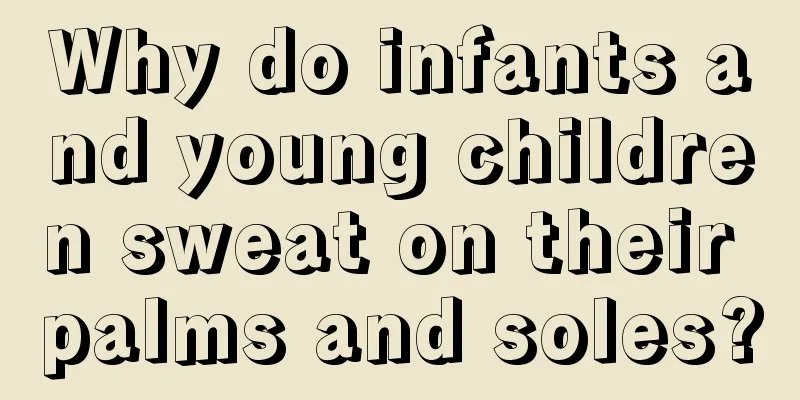Why do infants and young children sweat on their palms and soles?

|
Everyone will have an increased sense of responsibility after becoming a parent. Of course, in the process of taking care of the baby, once you find some abnormalities in the baby's body, you will always be particularly worried, especially when the baby is relatively young and cannot express his or her emotions and needs, which all require parents to observe. Among them, many parents will blindly supplement the baby with trace elements when infants and young children sweat on the palms and soles of their feet. In fact, there are many reasons for this phenomenon. Let's understand why infants and young children sweat on the palms and soles of their feet. Why do infants and young children sweat on their palms and soles? There are two types of sweating: physiological and pathological. The vast majority of children's hyperhidrosis is physiological. Because children's sweat glands and sympathetic nervous systems are not fully developed, their metabolism is active, their skin has many blood vessels, and their body water content is high. In addition, they are active and sweat more than adults, so sweating easily is a normal physiological phenomenon. In addition, wearing too many clothes, covering with too thick a blanket, or too high a room temperature can all cause children to sweat excessively. Giving children overheated milk or other food can also cause sweating. Sweating right before falling asleep may be the result of excess energy stored in the body that needs to be released. To reduce the sweating of young children while sleeping, you can avoid strenuous activities before going to bed, keep the indoor air circulating and fresh, and cover with a thinner quilt. Pathological hyperhidrosis is commonly seen in children as rickets due to vitamin D deficiency. If the baby has been taking preventive doses of vitamin D (400 units per day) or has been spending time outdoors regularly, and the child's motor development is normal and there are no bone abnormalities, there is no need to worry about this disease. If other diseases are accompanied by other symptoms besides sweating, please seek medical treatment if necessary. If you are not currently taking vitamin D, you should start taking it as soon as possible. For the first month, take Icoxin twice a day, 1 tablet each time. After one month, change to once a day. Take regular outdoor activities and get some sun. It is very beneficial for sweating. The above is an introduction to why infants and young children sweat on their palms and soles. After understanding it, we know that this phenomenon is generally caused by the baby wearing too many clothes or the indoor air is not circulated. Another reason is that the baby lacks vitamin D. However, you must take the baby to the hospital for testing before taking nourishing medicine, and do not take it blindly. |
<<: Symptoms of retinopathy of prematurity
>>: What to do if your one-year-old baby has indigestion
Recommend
Where should I apply warm water to a child with a fever?
Many children will have fever for some reasons in...
What are the symptoms of anorexia in children?
Anorexia in children is also clinically known as ...
Treatment of infant cough and wheezing
The reason why babies cough and wheeze is that we...
Why does my baby have swollen eyes when he wakes up in the morning?
Every baby is the apple of the eye of the whole f...
Symptoms of rheumatoid arthritis in children
Recently a friend of mine was doing a report focu...
Newborn hug reflex?
As the baby grows, parents need to pay attention ...
Why is the hair thinning in a seven-month-old baby?
What mothers are most concerned about is probably...
Is it ok for a two year old baby to eat breast milk?
It is not good for a two-year-old baby to eat bre...
What should you pay attention to when your child loses teeth?
Only by having healthy teeth can you ensure a nor...
What should I do if my child's front teeth grow crooked?
Most children will grow teeth around the age of s...
What should I do if my child is allergic to milk powder?
Parents need to be vigilant if their children are...
What to do if a child falls and injures his head
Babies' mischief and ignorance are signs of t...
What are some ways for children to exercise?
Everyone knows that if you want to have a healthy...
How to effectively teach your baby to crawl
Many parents start helping their babies learn to ...
How to reduce the fever caused by baby's tonsillitis?
Tonsillitis is a common disease in life. In order...









